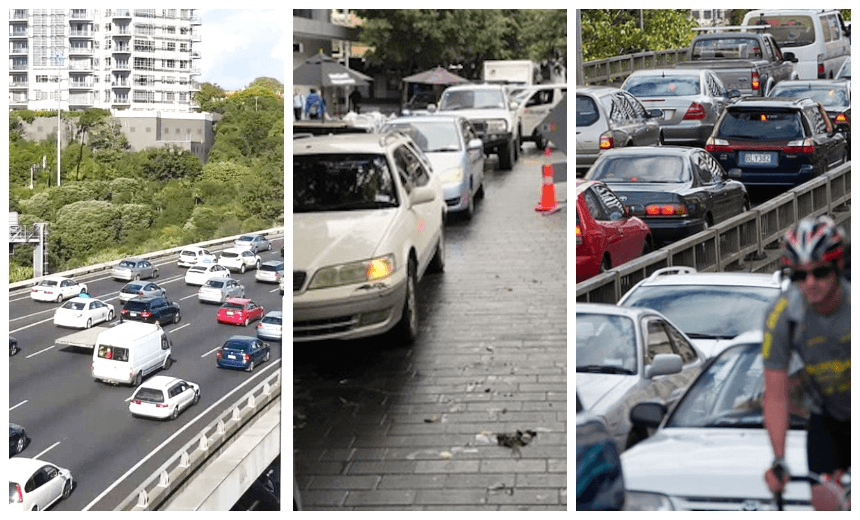The government talks a good game on climate but it’s impossible to see how its ambitions can be achieved while public transport and infrastructure spending remains so low.
This story was originally published in Bernard Hickey’s email newsletter The Kākā and is republished with permission.
Pledges by the government and Auckland Council of climate emergencies are looking increasingly like purely performative statements, rather than a signals of actual action. Recent events show that they remain more focused on keeping public debt and interest rates low for homeowners than addressing the crisis through public transport spending.
For example, Auckland Council has just signed off on a 10-year transport plan that reduces climate emissions by just 1%, in part because of funding cuts by the central government’s Waka Kotahi-NZTA just 10 days ago.
That’s despite both the government and the council declaring climate emergencies in the last two years, the council having a AA+ credit rating and the government sitting on $40b in cash.
Auckland Transport CEO Shane Ellison told the council yesterday, as it signed off on its 10-year Regional Land Transport Plan (RLTP), that the Eastern Busway – a key part of plans to link Botany and Panmure to get commuters out of cars and into buses – had been delayed for two years because of Waka Kotahi’s announcement to councils across the country 10 days ago that it was cutting funding for public transport.
The government has $40b in cash sitting in its accounts with the Reserve Bank and has no restrictions on its ability to borrow at less than 2%. Yet it continues to insist it has to “keep a lid on debt”, which is mandated under the Public Finance Act and actively enforced by the Labour government.
Meanwhile the government has also committed to reach net zero emissions by 2050 and the Climate Commission has set a target of reducing emissions by 36% by 2035, including an assumption of a trebling of public transport use in Auckland by 2035. Auckland Council has committed to reducing transport emissions by 64% by 2030.
Neither is remotely credible while adhering to the Public Finance Act’s insistence on debt reduction in normal times while also not pricing in the liabilities of having to buy carbon credits on international markets in future years.
The chart above shows how much lower New Zealand’s debt is than similarly rated sovereigns. Keeping our debt low is largely about reducing interest rates slightly to hold up property prices for median voters. Keeping infrastructure spending low also reduces potential housing supply, which further supports house prices and rents for those dependent on tax-free capital gains and high rents to support their wealth.
The low infrastructure spending over the last 30 years under the Public Finance Act and the lack of a capital gains tax has happened at the same time as New Zealand’s house price inflation has outperformed those other countries with capital gains taxes and higher public infrastructure spending, as the two charts below show.





